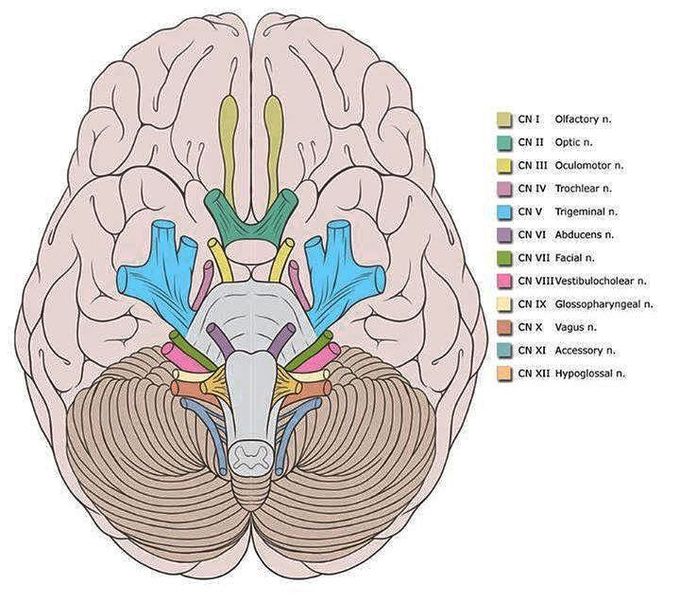


Cranial nerve roots
Great illustration of the cranial nerve roots : Cranial nerves (sometimes also termed cerebral nerves), are nerves that emerge directly from the brain, specifically from the fore-brain and brainstem, in contrast to the spinal nerves, which emerge from various segments of the spinal cord. It is through the cranial nerves that the brain receives information from, and issues controls of functions of various structures, primarily of the head and neck. Since spinal nerves reach only to the level of the first cervical vertebra, thus the cranial nerves fill the same role above this level, as spinal nerves do below the head and neck. Each cranial nerve is paired on the left and right. In humans, there are twelve pairs which are assigned roman numerals according to the order in which they originate from rostral to caudal. An additional pair of cranial nerves, termed cranial nerve zero (CN 0), was first discovered in sharks; its presence in humans remains a matter of debate. Cranial nerves 0, I and II emerge from the cerebrum; the remaining ten pairs emerge from the brainstem. The cranial nerves are components of the peripheral nervous system (PNS), with the exception of cranial nerve II (the optic nerve), which is not a true peripheral nerve but a tract of the diencephalon leading to the retina; both the optic nerve and the retina are hence part of the central nervous system (CNS). The axons of the remaining twelve nerves extend beyond the brain and are therefore considered part of the PNS. The central ganglia of the cranial nerves or cranial nerve nuclei originate in the CNS, preferentially from the brain stem. 📷•Medicogram• #letslearn #cranialnerves #neuroscience #neuro #surgery #medicine #brain #trending #now #medicogram

